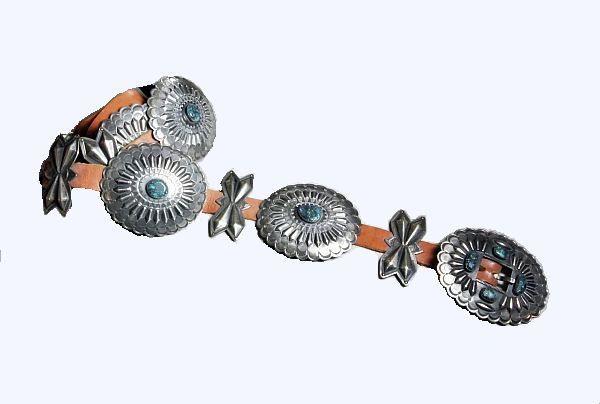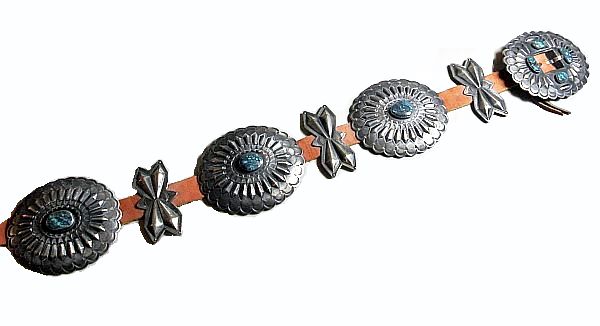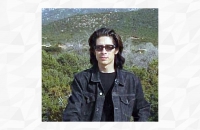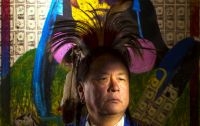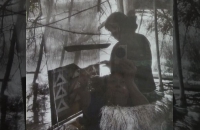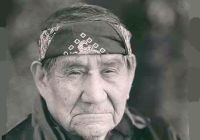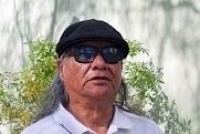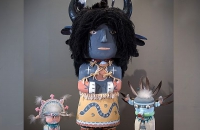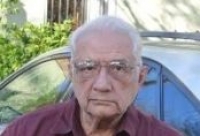J1243 Harry Morgan
Sterling silver concho belt by master Navajo silversmith Harry Morgan. The six 3 1/2" x 3" conchos have a hand stamped and repousse silver pattern with Blue Diamond turquoise and seven repousse butterflies. The 3 3/4” x 3” buckle has four Blue Diamond turquoise. The 3/4” x 55” belt can be adjusted to any size.
Call for shipping
Long time area miners have been noted to say the Blue Diamond mine yielded some of the best turquoise in Nevada. After many years of being closed, today Blue Diamond turquoise is once again being actively mined in limited quantities by the current owner.
Harry Morgan became famous for his old pawn style jewelry. He is known and respected as one of the most outstanding Native American silversmiths, and he has won awards at every major Indian art show.
About the artist
Harry Morgan
Harry Morgan passed away in the spring of 2008. He was an incredible fifth-generation Navajo silversmith from New Mexico who won many awards for his beautiful jewelry design. He began casting jewelry when he was 7 years old - for 75 cents to a dollar, enough for bubble gum, a soda pop, 5 suckers and a Boston Pie - and became a silversmith at age 12 and professionally as a silver and goldsmith since l965. Harry could do all types of silver work, from sand casting to fabrication. He credited the time he spent watching his mother work for giving him an interest in jewelry.
Harry Morgan spent his life in and around Gallup, New Mexico. He won awards at every major Indian art show and there was an exhibit featuring his work at the Heard Museum North the year before he died.
After graduating from Gallup High School, Harry received a 4-year scholarship from the Navajo Tribe to study engineering, but school no longer interested him. Being a rodeo cowboy was his next dream. As the popularity of the sport continued, Harry met his certain levels of satisfaction but wanted to experiment with jewelry again.
He opened his own silver supply store in Crownpoint, New Mexico and was inspired by his mother to create jewelry in the old pawn style, which he is now famous for. Harry was the nephew of two well- known and popular silversmiths, Charlie Bitsue and Ike Wilson. Today, most of their high quality creations are collector items and can be found in many museums.
The stamps that Harry used to decorate his work were inherited from his parents and uncles or made by him. Much of his work was made with silver that he rolled himself. He put a satin finish on every piece to give it an antique look. Harry got his ideas for his creations from the natural elements, such as nature, canyons, colors, and the different times of the day. He only used the finest natural turquoise. Harry’s remarkable stamp work with wide open spaces is the perfect balance between design and silver.
"The boldness of the silver is what's beautiful. You don't want to over decorate the silver. You want your jewelry to be big and bold."- Harry Morgan
Three of his five children, Kelley, Greg and Jacob took up the art form before Harry died. Harry was pleased. As he put it, he told them all to find something they love and stick with it and they all have He was glad that some of them have learned to silversmith. Harry left a legacy of artistic dedication when he passed away from complications from diabetes.
Harry Morgan was known and respected as one of the most outstanding Native American jewelers.

